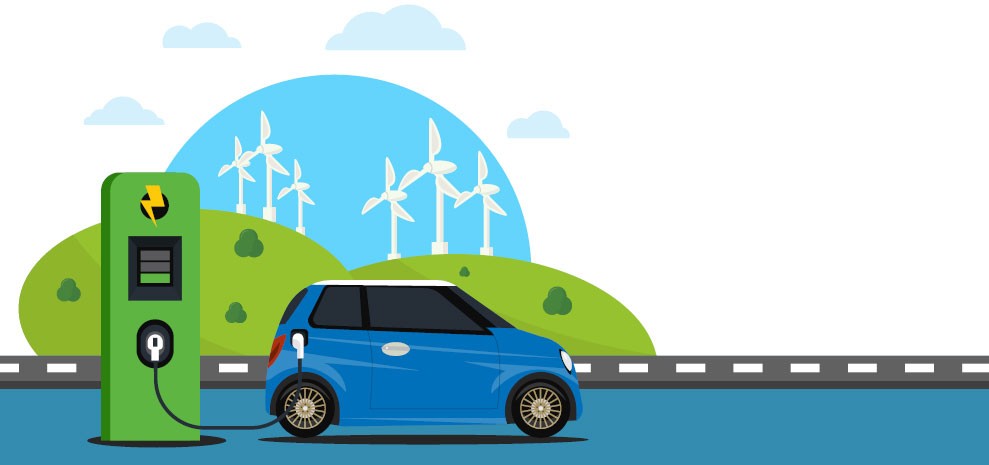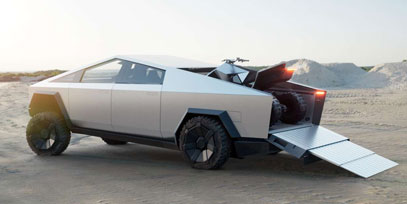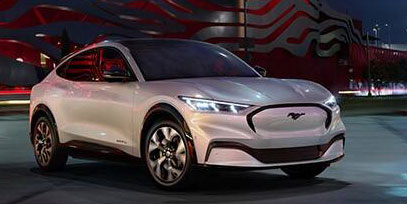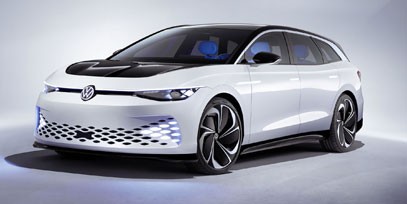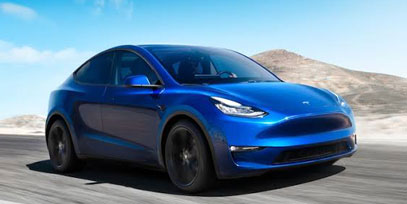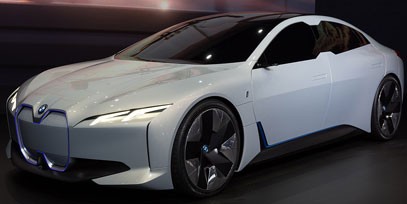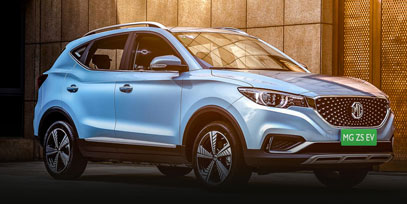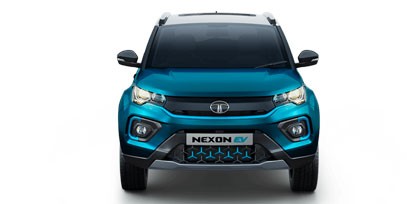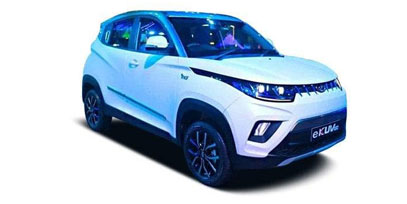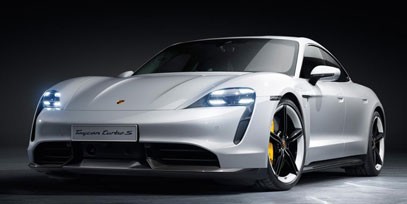Electric Cars in the New Decade
Much depends on making breakthroughs in battery technologies in making electric cars cheaper, safer, and practical for increased customer acceptance and market appeal in the 2020s.
At the dawn of a new decade, we are left to ponder over the future of automobiles. The technological landscape of the global industry appears way too ephemeral and constantly changing lately, leaving its stakeholders with profound awe and scepticism at the same time. Although automotive technologies were never constant before and the industry always comes up with a new bunch of buzzwords time and again, the decade passed by was quite different and decisive. The 2010s took the tech tales of electrification, connected vehicles, and autonomous driving to whole new heights, also deep down to the psyche of end-users. And, it is upon this pinnacle of technological maturation that we are left to imagine the prophecy of the auto industry in the 2020s!
Take for instance the term 'Electrification'. It is on the lips of everyone living in the auto town these days, a word that is suggested as a chant to all sorts of emission 'sins', while also causing all manners of confusions. Electrification is upon the industry and here to stay in varying forms, thanks to phenomenal environmental consciousness among the masses in the recent decades, not to forget the infamous 'diesel-gate' scandals that shook the world. On the other hand, things aren't as clear as we would expect. The policymakers are pushing for electrification - at times without even knowing the complete picture and nitty-gritty; automakers say they are bucking it up - with cunningly-worded vision statements we don't know how are they going to pan out; and consumers are asked to ponder over new alternatives - when they are not yet down to earth.
But one thing is clear. The 'electric' age is here and EVs are the next big things, outrunning connected or autonomous vehicles. They are to eclipse internal-combustion engines (ICEs) for sure someday when these techs are evolved on-par and their prices coming to some parity - to become the real 'alternatives' to their ICE counterparts. However, the questions of 'when' and 'how'
(by what means - battery-electric, fuel cell, or whatever) is a Pandora's box and subject to fierce and divergent speculations. A common and most-plausible take on the conundrum is that the consumer acceptance of EVs is greatly dependent on making them cheaper, safer, and practical as ICE vehicles, which again is dependent on the efficacy of battery technologies
and charging infrastructure to support the end-users. Easier said than done!
Battery affairs
There can be no understatement that battery technologies are fast improving. The 2010s saw strident progress in lithium-ion battery technologies, something that was limited to powering mobile phones and tiny gadgets at the beginning to the decade leaped forward to startle electric cars and buses as well. Their application in EVs is also witnessing significant improvements, for instance, the latest iteration of e-cars like VW e-up! or Skoda e-Citigo are equipped with battery packs twice as big as the one in their prototypes a few years ago. We are also quite convinced now that battery cars doesn't always have to be tiny micro hatches or half-baked concept cars. Thanks to Tesla in particular for making this seismic shift in the industry, e-cars these both tech-savvy, performance-oriented, and beefy. Forget about the 751 bhp Porsche Taycan electric sports car or the upcoming Ford Mustang Mach-E, the legendary Hummer brand is also back from the grave in electric avatar!
Yet, the most-affordable electric cars of the decade in the West like Nissan Leaf or Chevrolet Volt were perceived as far from ideal by the masses, as it was more of a trade-off (as against conventional cars) for the users in terms of range anxiety and impracticability in charging. Tesla Model S was one exception - with its massive 85 kWh battery and 265 miles (426 km) driving range that is unmatched to date - but it is in the premium end of the spectrum and did not drive volumes. It is important for electric cars to break out the 'second car' or 'local trips only' stereotype to take over a fair share of the market in the 2020s. Without significant improvements in battery chemistry and lightweighting of the battery pack, coupled with large-scale charging networks and service areas, these nightmares are bound to haunt the EV industry in the coming years as well.
That way, the automotive industry with be on a serious lookout for new potentials to scale-up existing battery types and advance newer technologies or energy storage solutions in the next ten years. Any such breakthrough and a significant reduction in the costs of battery packs for electric vehicles will dramatically change the automotive landscape in the years ahead. Some say that solid-state technologies, i.e. use of solid materials instead of flammable liquid electrolytes within a battery's internal architecture, promise major improvements on existing Li-ion packs. They claim that solid-state batteries can break the existing limitations of power for longer range, while also bringing down the charging duration from hours to minutes. That should reduce the fire risks of batteries and enable thinner cells and compact size of battery packs that fit under a car seat.
Companies like Toyota, Daimler AG, and Fisker AG among others are said to be working in this direction. The biggest hope is on Toyota, which has invested about 1.5 trillion yen ($13.9 billion) on battery development and plans to commercialize solid-state technology by the early 2020s. However, experts predict that solid-state batteries may not be available before the end of the decade, and even if it did, their pricing can be more premium. Yet, its development holds key to the emergence of next-generation batteries in the decades to come. Although Tesla maintains that it doesn't see any technologies better than their existing Li-ion packs, its supplier Panasonic is said to be researching on solid-state technology.
Hybrid scenario
On the other hand, automakers like Mazda are taking roads less taken. The Japanese carmaker says it will never go for a 'big battery' e-car, as their eco-friendly credentials are ambiguous than conventional diesel-powered cars judged over a whole energy life cycle. It will instead use a smaller 35 kWh battery pack in its upcoming MX-30 electric car, along with a compact rotary engine to be a range extender. We will see more of such hybrid technologies in this new decade, as hybrid cars can be less of a trade-off for both the manufacturer and consumers. Depending on the standards and affordability of global markets, automakers will be offering hybrid systems in cars chosen from an array of choices - from mild diesel hybrid systems to full-range plug-in hybrid.
The 2010s took the tech tales of electrification, connected vehicles, and autonomous driving to whole new heights, also deep down to the psyche
of end-users.
Hydrogen fuel-cell is yet another strand of alternative powertrain technologies that are worth watching in the 2020s. Toyota and Hyundai are pioneering in this tech space, which has greater potential for commercial vehicles as well. Some experts even predict that hydrogen FCVs will be the 'electric future' in the immediate decades to comes, more than heavy plug-in battery vehicles. With a variety of automakers, tech suppliers and startups working on a multitude of technologies towards sustainable and emission-free mobility, the governments are expected to adopt a technology-agnostic approach in terms of incentives and patronage, so that the markets - and by extension, the end-users - decide which technology to go for based on their affordability and conveniences, from a slew of choices.
Where does India fit in, in this discourse? Well, as a large market base for passenger cars and a leading manufacturing hub, 'electrification' will be an integral part of discussions in the Indian automotive landscape. Although the electric revolution was kickstarted in the country by Reva Electric as early as 2001, nothing much has happened in the market appeal of electric cars in the last two decades - again for the simple reasons of range limitations, higher upfront costs, and absence of charging infrastructure. Nevertheless, the market is greatly maturing, we see manufacturers indulging in development of e-cars for the domestic market, some have launched India-specific products as well. The 2020s will be a decisive period for the market's preparedness to electric transition, let alone becoming fully-electric as many would like to believe.
Tesla Cybertruck
A long-awaited pickup from Tesla, this is one sensational machine, both by looks and performance. An entry-level variant will boast a range of 250 miles (402 kms), while a dual-motor version will stun the users with 300 miles (482 kms). In 2022, the top-spec tri-motor model (first-ever by Tesla) will be introduced with 500 miles (800 kms) driving range, with a top speed of 130 mph.
MG ZS EV and Hyundai Kona Electric
The ZS electric is MG's second product for the Indian market, with 44.5 kWh battery pack and 105 kW electric motor that offers an ARAI certified range of 340 kms. On the other hand, Hyundai's Kona is a global product with much-acclaimed range of about 450 kms, powered by a 39.2 kWh lithium polymer battery pack. Both these compact electric SUVs, along with Tata Nexon EV, are setting the tone for a more serious EV segment in the domestic market.
Mahindra eKUV100 and Ford-Mahindra Aspire EV
The electric KUV100 is on test for for a while, was even displayed at 2018 Auto expo with 15.9 kWh lithium-ion battery good enough for a range of about 120 kms.
With Mahindra and Ford joining hands, an all-electric compact sedan is rumored to be one among the new products in their agenda. It could very well be on Aspire platform, with a 300+ km range and a fast-charging facility.


